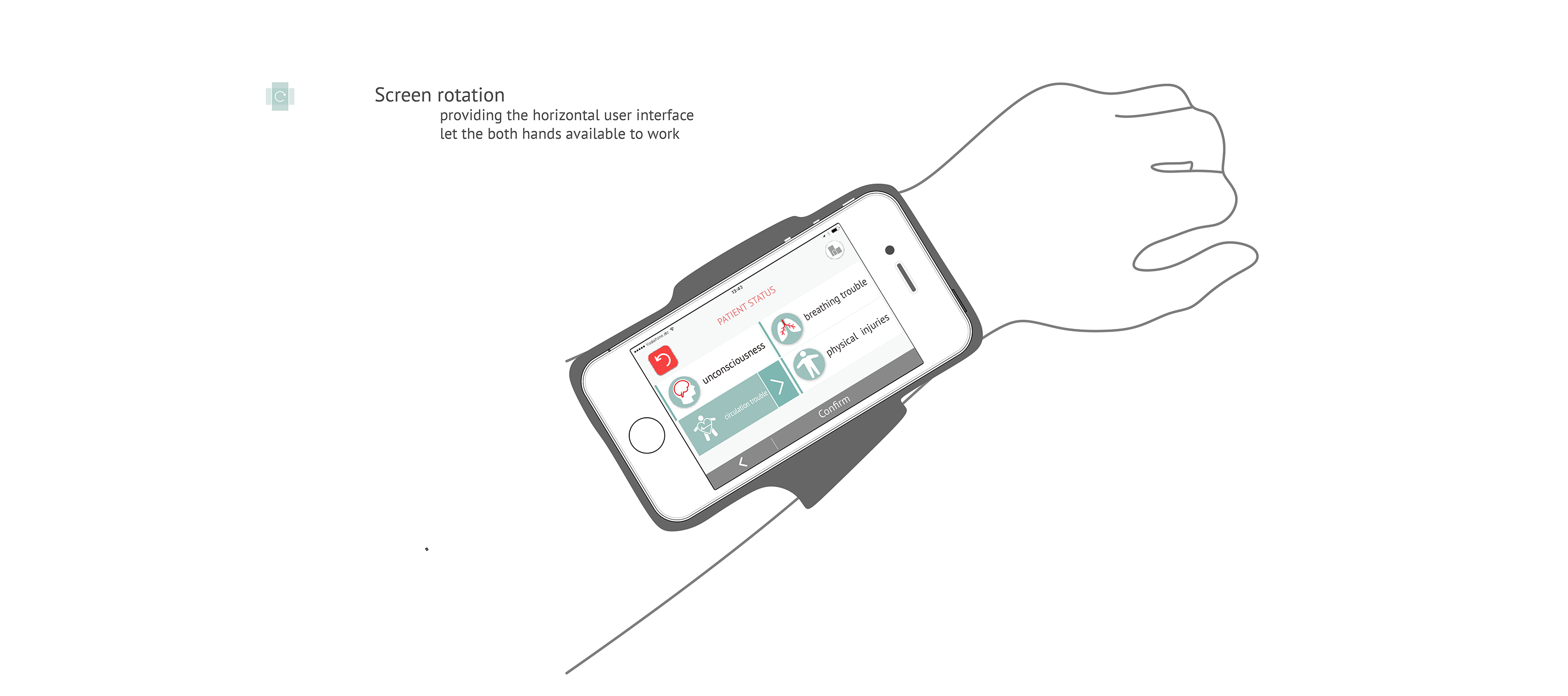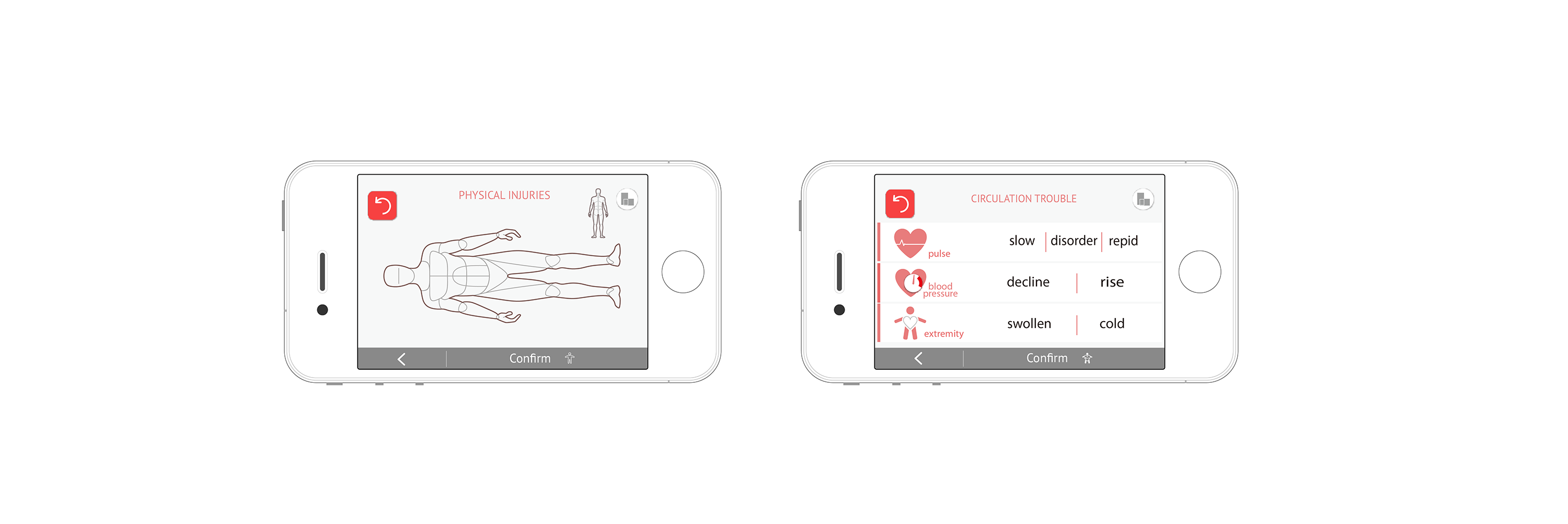Intuaid Project
Background
The German sea rescue team is made up entirely of volunteers: all sea rescuers and the many volunteers in “red jackets” are on call 24/7 in all weather conditions, regardless of whether their lives are in danger. They must withstand wind, rain and waves. In addition, darkness and noise make communication difficult.
In summer, 2015, the Intuaid Project has invited us to develop an App, helping them to solve the problems.
Interview and Participation Experience
First of all, we visited the local sea rescue station in kiel. Through chatting with the team, we also got to know the sea rescue process, the composition of the personnel, some common sea rescue operations and some unexpected difficult situations. Under the organization of intuaid team, we also had the opportunity to board the rescue boat and have a simulated experience of rescue at sea.
Workshop: Ideation
Find out problems
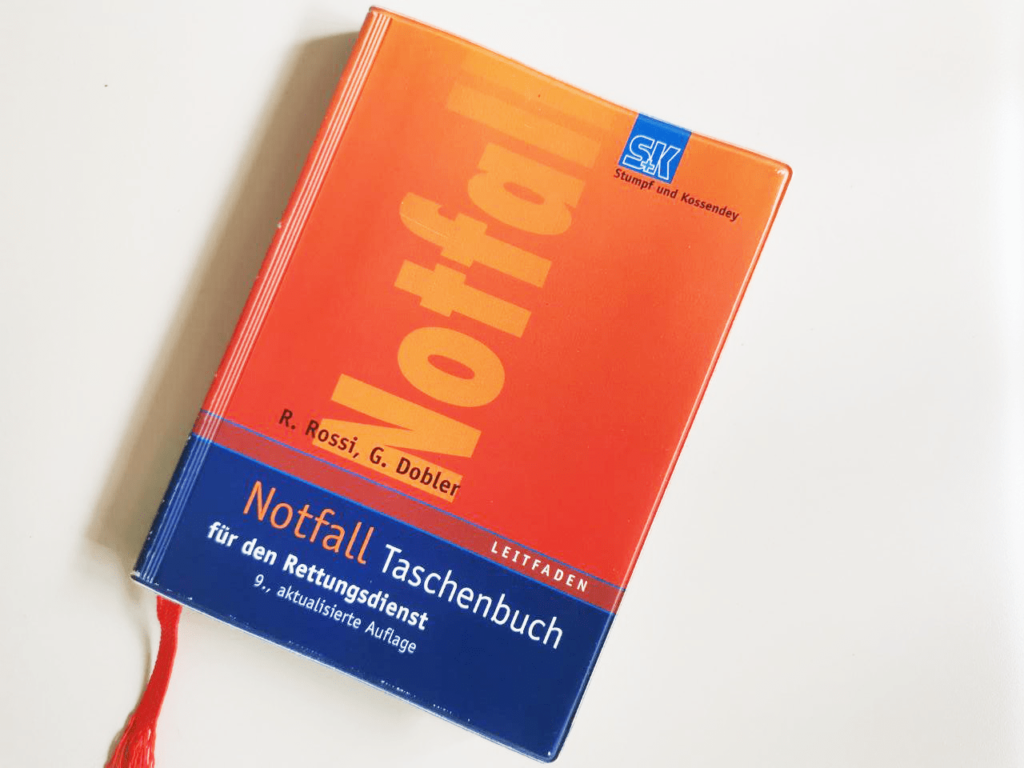
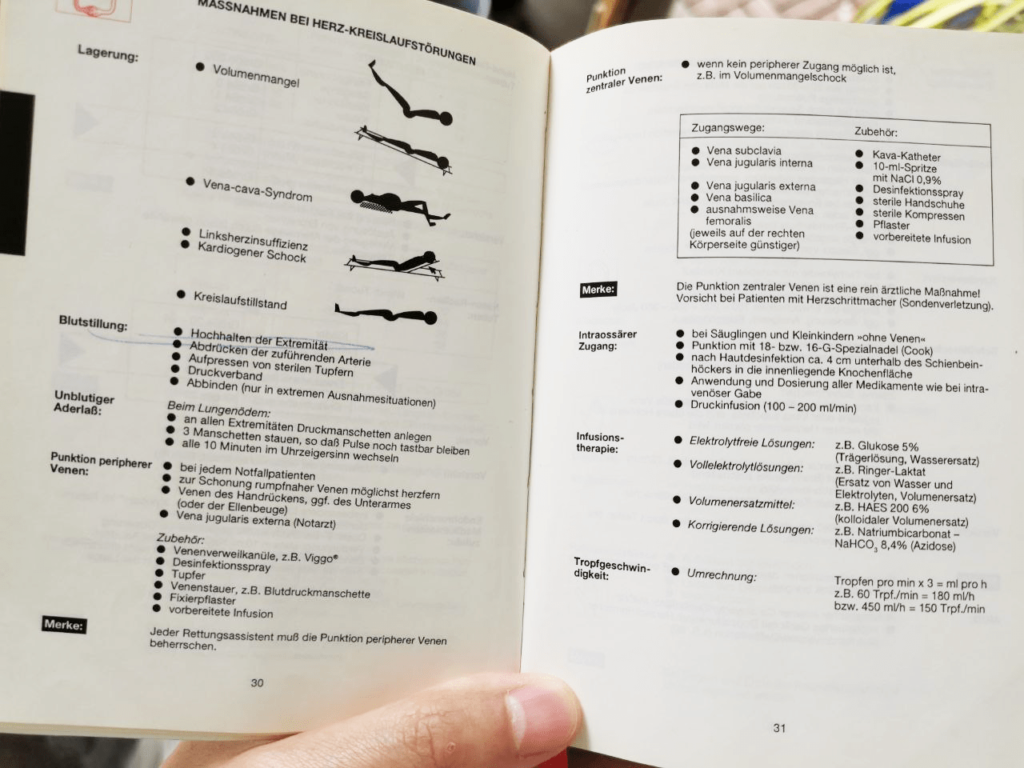
Each rescuer has a first aid manual in their backpack in case they don’t know what to do in the event of an emergency injury rescue. The rescue manual lists emergency measures for a variety of injuries or illnesses, including brain awareness, breathing difficulties, heart and circulation problems, and external injuries. Each type of injury corresponds to a recovery position, such as lying on one’s side after losing consciousness, lying halfway down to help the casualty breathe, lying flat with the upper body slightly lower than the lower body to help blood return, and lying flat to prevent further wound damage.
The vast knowledge of emergency rescue is a great challenge for people from different knowledge backgrounds and different rescue experiences, especially when the rescue activities at sea in a poor external environment and the trapped person encounters multiple injuries at the same time, if the casualty loses consciousness because of breathing difficulties, then the side lying way will aggravate the breathing difficulties.
Proper recover position is an essential aspect of first aid. It serves to protect the injured person from further damage after the rescuer has freed him from the danger zone.
Solution & Challenges
This is designed to help maritime rescuers get accurate recovery positioning faster and provide further guidance on scene rescue. At the same time, the design needs to take into account the user has different experience in sea rescue, legible interface facing the difficulty of cell phone operation (Unstable deck, both hands needed to move injured person) in sea rescue, and a quick reset button in case the wrong information was entered.
The first challenge was to simplify the types of injuries listed in the rescue manual.
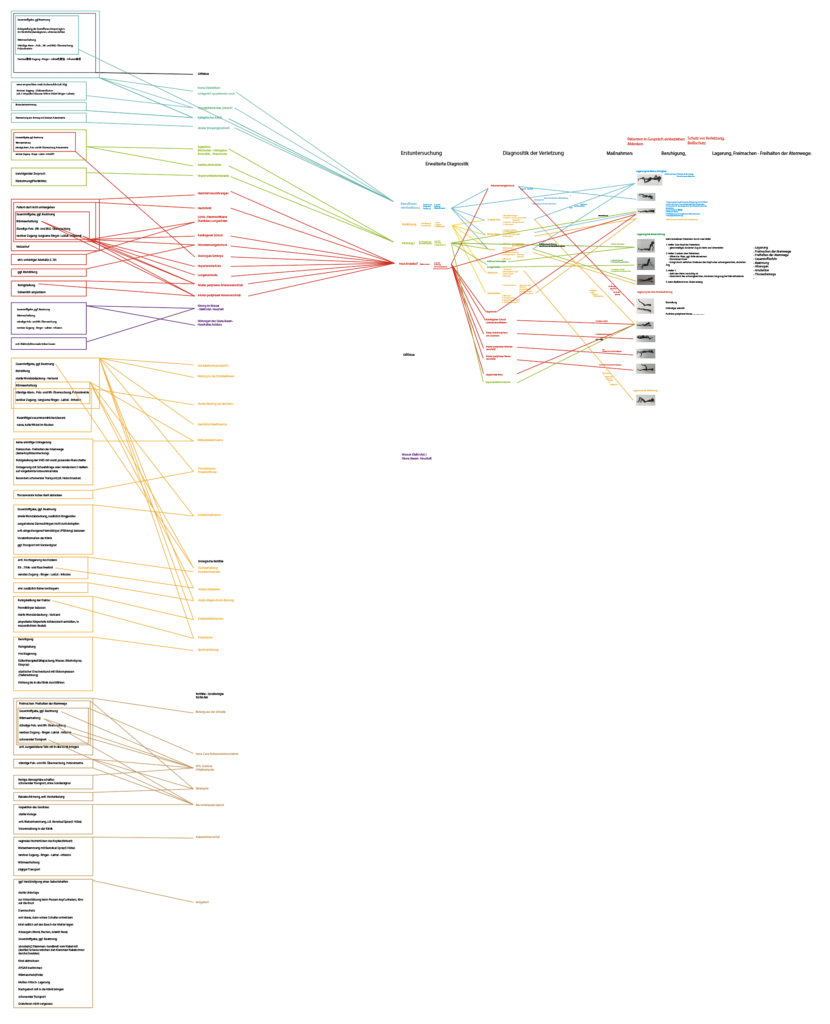
Wireframes
By simplifying the types of injuries listed in the rescue manual, we grouped the original 11 emergencies into whether there was consciousness, whether there was breathing problems, whether there were heart and circulation problems, and whether there were injuries.
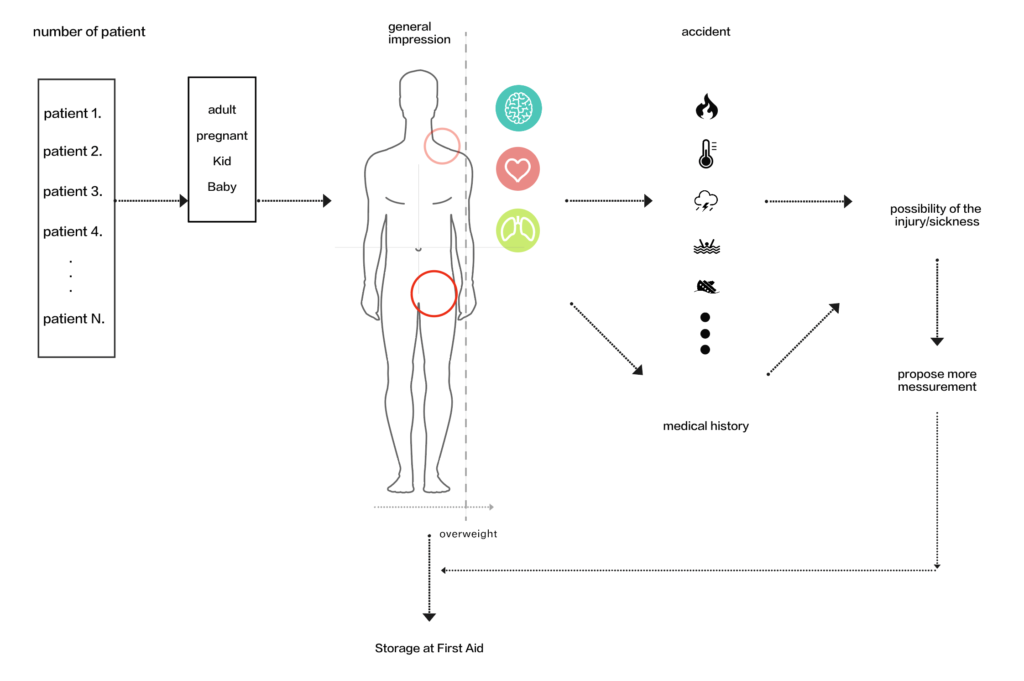
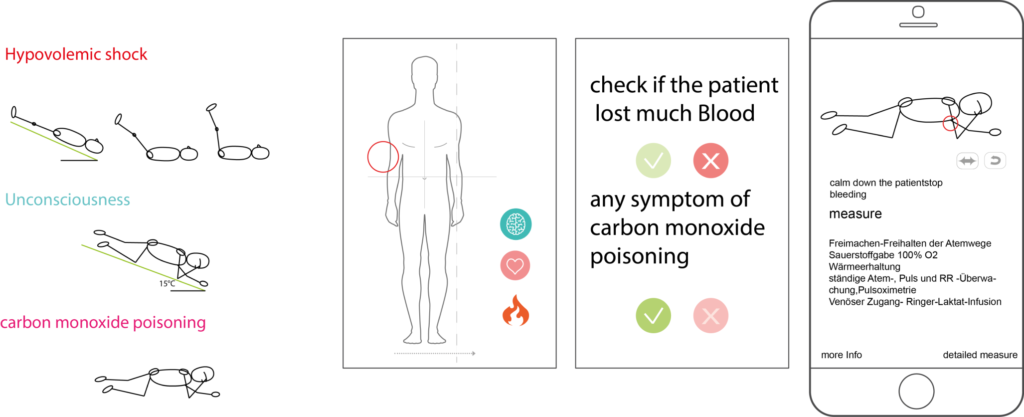
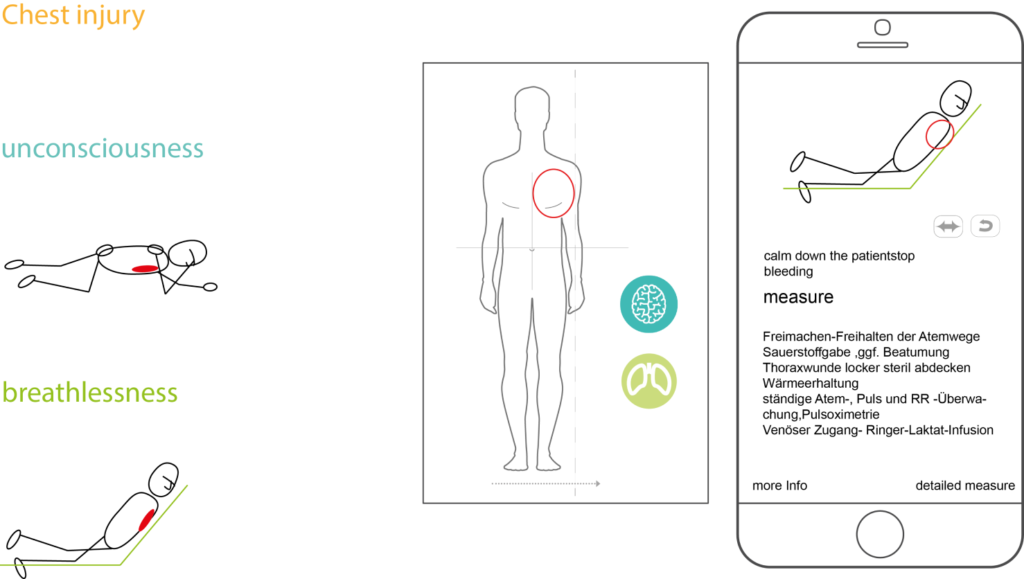
Interface Design

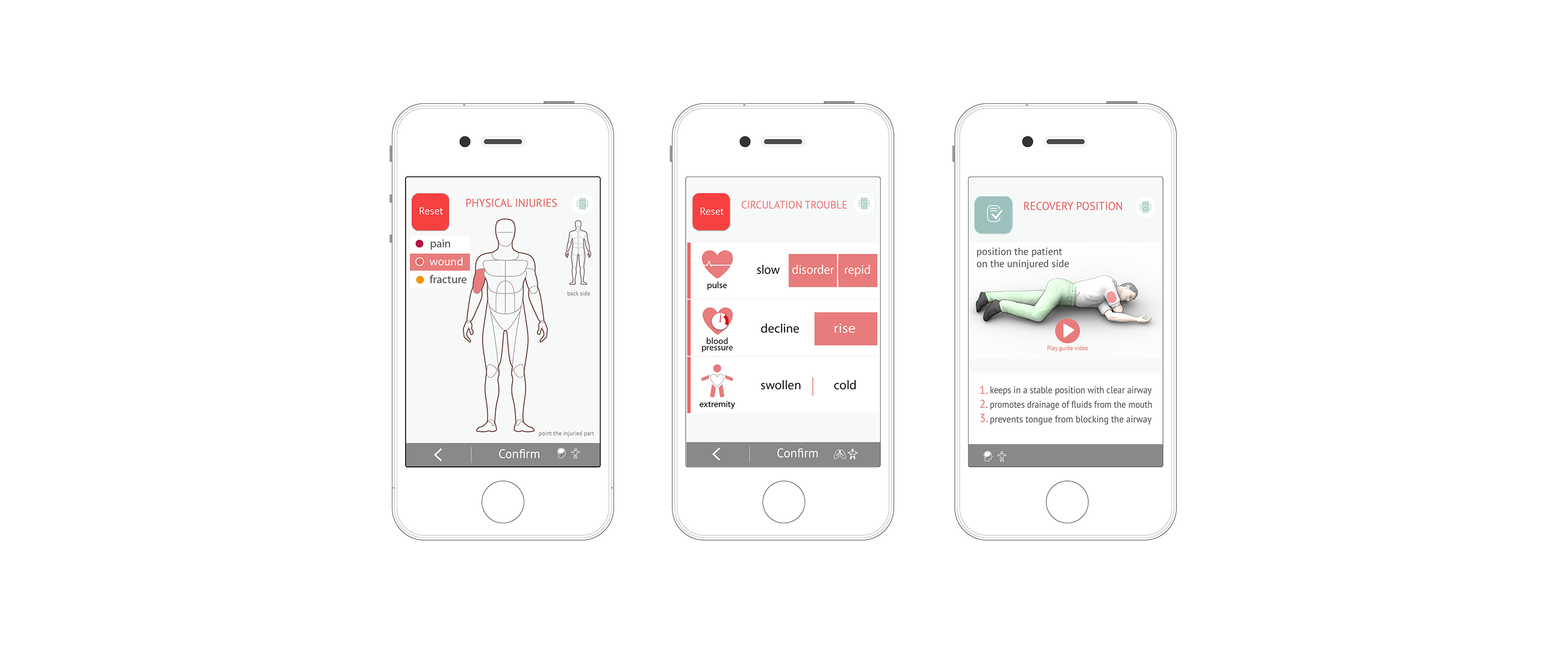
Automatic screen rotation is not desirable due to difficult conditions, instead there is manual screen rotation function when the first-aider is busy with two hands.
